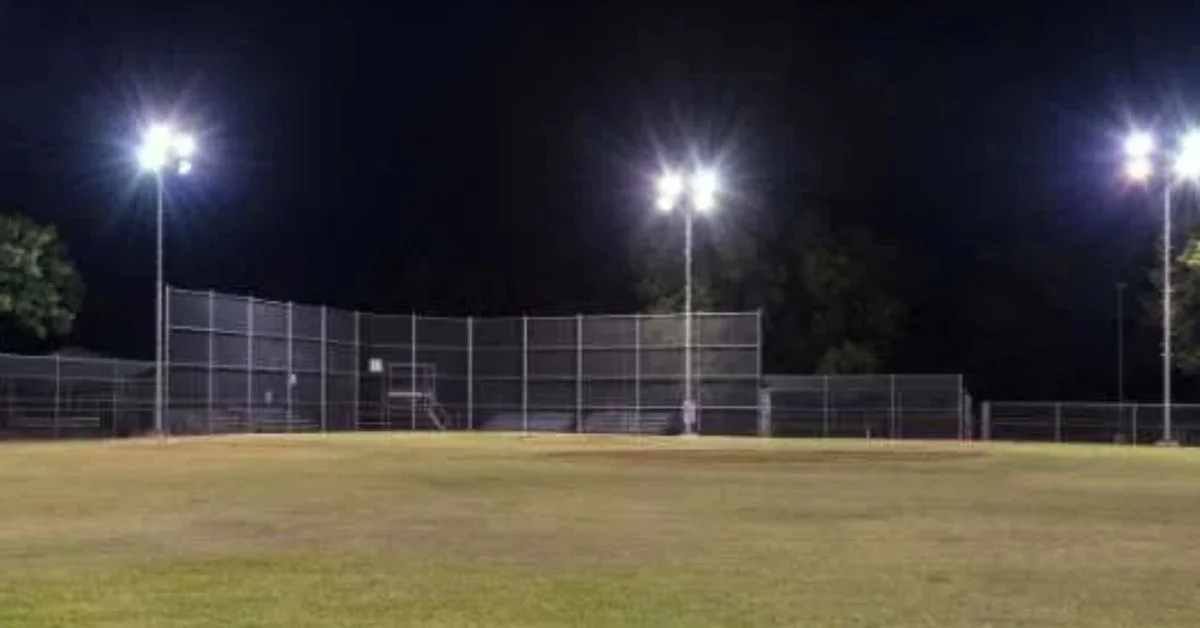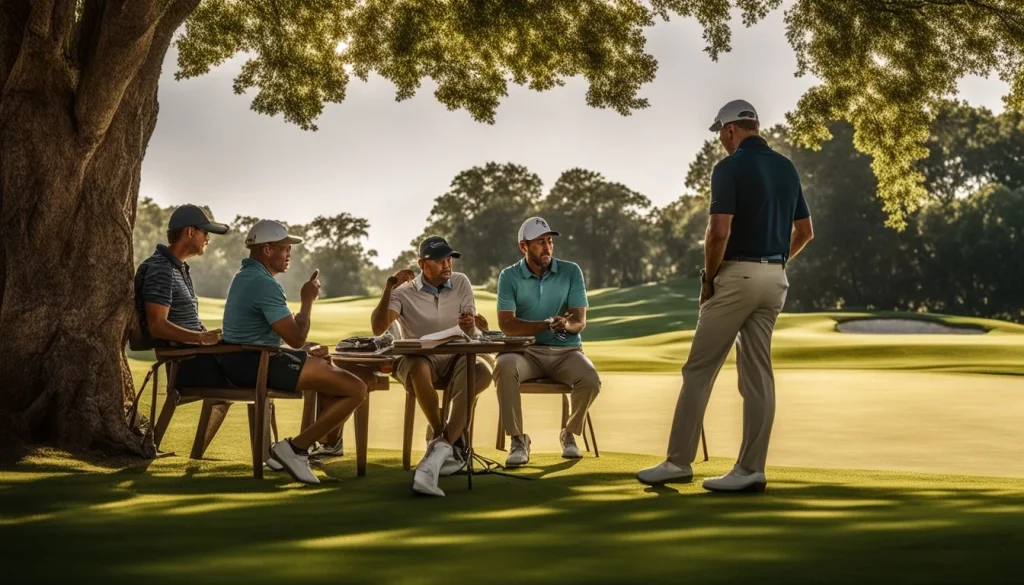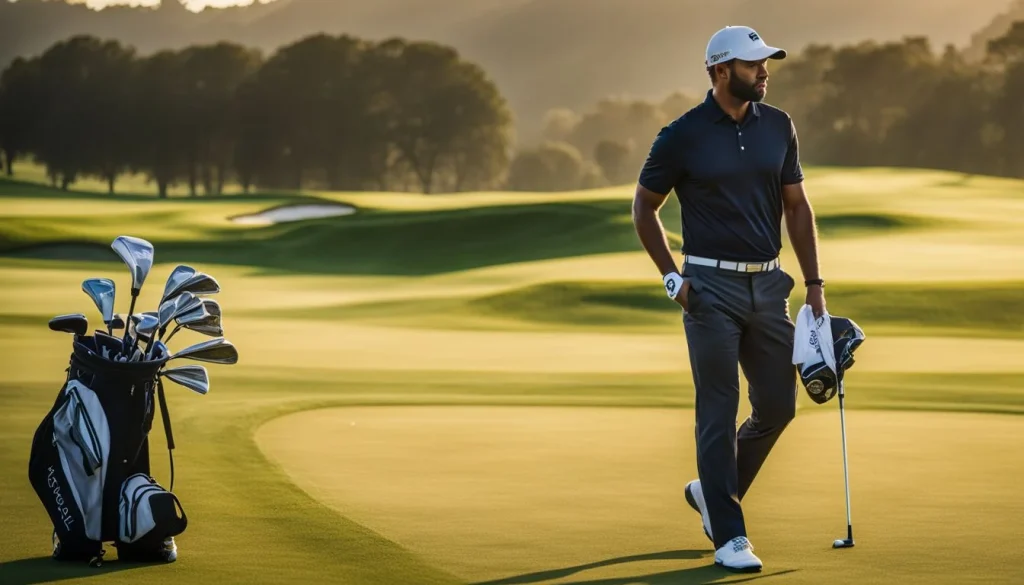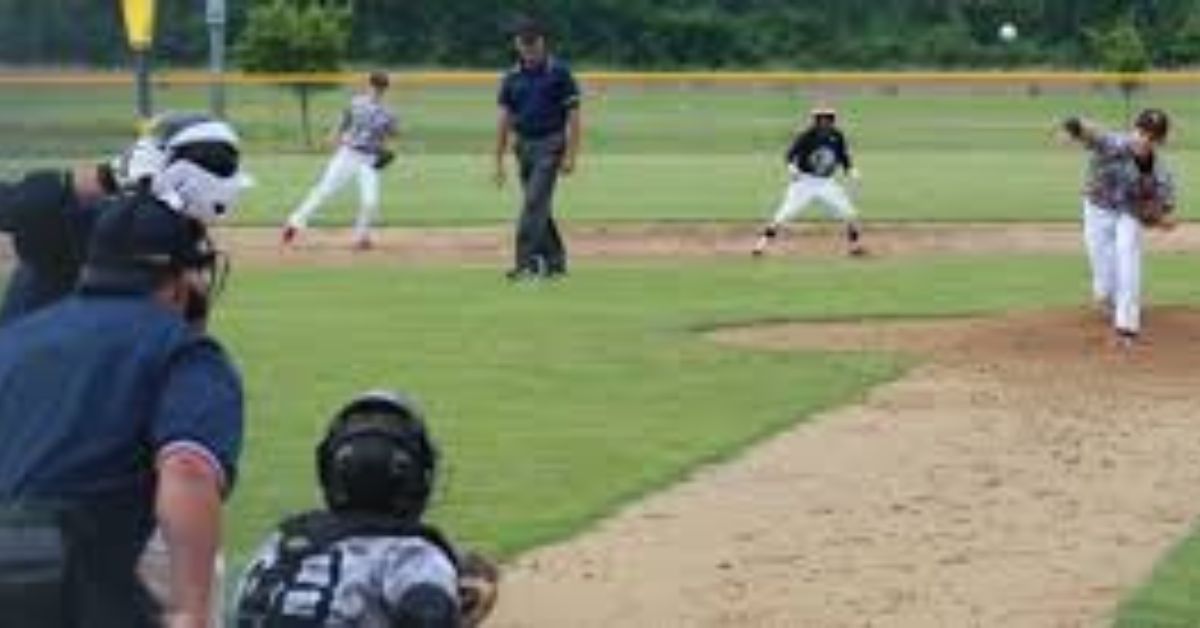SPORTS
What Lighting Standards Are There For Baseball Fields?

Baseball field lights are specialized lighting systems that illuminate baseball fields, giving players and spectators clear vision during evening games and events. These lights serve an important role in extending playing hours, allowing for night games, and promoting a lively sports community. The introduction of LED technology has revolutionized baseball pitch lighting, providing various benefits.
LED lights are energy-efficient, requiring less electricity yet providing more brightness and color accuracy. This not only lowers operational expenses but also corresponds with sustainable principles, making baseball stadiums more environmentally friendly. Modern lighting systems frequently include movable components, which allow for customization based on different events, resulting in a varied environment for baseball and other sports.
Properly lit baseball fields are critical for player performance and safety. Adequate lighting allows players to correctly track the ball, make precise moves, and reduce the risk of injury. Furthermore, the well-lit facilities of Baseball Field Lights improve the spectator experience by providing good views of the game, brilliant colors, and a more immersive ambiance during evening games.
How Do Baseball Field Lights Contribute To Player Safety?
Baseball field lights serve an important role in maintaining player safety by providing appropriate and uniform illumination throughout the field. Proper lighting is required for players to correctly monitor the ball, make precise moves, and avoid potential risks during evening games. Clear visibility allows players to respond quickly and efficiently, lowering the danger of collisions and injuries.
LED technology, which is widely utilized in modern baseball pitch lights, provides improved brightness, color accuracy, and uniform distribution, hence improving overall visibility. Well-lit playing surfaces reduce the possibility of mistakes and contribute to a safer atmosphere, giving players confidence and allowing them to perform at their peak without jeopardizing safety.
Lighting Standards For Baseball Fields
The success of baseball games relies heavily on effective lighting, ensuring visibility, safety, and an immersive experience for players and spectators. Lighting standards for baseball fields play a pivotal role in achieving these objectives. In this detailed article, we will explore and dissect the key lighting standards that govern baseball fields, covering aspects from light levels to glare control and color accuracy.
Light Level Requirements
Light-level criteria specify the minimum illuminance required across various parts of the baseball pitch. Standards vary according to the level of play, ranging from recreational to professional. The infield normally requires more light to facilitate precision operations, but the outfield may require significantly less. Measurements are frequently expressed in foot candles, with standards tailored to the unique requirements of particular playing grounds.
Uniformity And Glare Control
Uniform illumination is crucial for avoiding shadows and inconsistencies on the field. Lighting standards need precise uniformity ratios to provide minimal variance in light levels over the playing field. Glare control measures, such as shields and baffles, are used to prevent direct glare and improve visual comfort for players and spectators. Achieving homogeneity and limiting glare help to provide an optimal playing environment.
The Color Rendering Index
Accurate color representation is required for displaying team colors, player uniforms, and other colorful components on the playing field. Lighting standards frequently recommend a high color rendering index (CRI), which ensures that light sources render colors properly when compared to natural daylight. A CRI threshold ensures that the lighting system accurately reproduces the vibrant and true-to-life colors associated with baseball.
Flicker-Free Operation
Flickering lights can be distracting and affect the overall sports experience. Baseball lighting regulations emphasize flicker-free operation, which ensures constant and uniform illumination. This feature is especially important for televised games, as flickering lights can degrade broadcast quality. LED lighting, noted for its flicker-free performance, is widely used to achieve these standards.
Spill And Skyglow Control
Spill and skyglow management are critical components of baseball pitch illumination specifications. These measures seek to reduce light pollution beyond the playing area. Guidelines require sufficient light shielding and direction to avoid excessive illumination of adjacent areas and the night sky. Adhering to spill and skyglow control regulations guarantees that the baseball pitch lighting system prioritizes environmental concerns, reducing its impact on nearby regions.
Mounting Heights And Fixture Positioning
Baseball pitch lighting regulations stipulate fixture mounting heights and precise positioning for optimal illumination. The angle and direction of the fixtures are crucial for minimizing shadows and delivering even coverage across the playing field. Adherence to these criteria helps the lighting system’s consistency and efficacy, ensuring that the baseball pitch is well-lit with consistent brightness, reducing shadows, and improving the overall playing experience.
Energy Efficiency And Sustainability
Modern baseball lighting standards prioritize energy, economy,, and sustainability. LED lighting, noted for its energy-efficient efficiency, is consistent with these objectives. Compliance with energy efficiency standards not only lowers operational expenses but also promotes ecologically friendly behaviors. This emphasis on sustainability reflects a broader commitment to environmentally friendly sporting facilities, ensuring that baseball pitch lighting solutions help to create a greener and more efficient future.
Adaptability To Different Levels Of Play
Baseball lighting guidelines prioritize system adaptability to diverse levels of play. From casual activities to professional-level competitions, lighting should be adaptable to fit unique needs. Features such as changeable lighting settings, dimmability, and programmable features ensure that the lighting system can meet the specific needs of various events, increasing the versatility and inclusivity of baseball pitch lighting.
Technological Advancements And Future-Proofing
Baseball lighting guidelines recognize the value of technological improvements and promote future-proofing methods. As technology advances, standards may incorporate new features such as smart lighting controls, wireless networking, and data analytics. Future-proofing ensures that baseball pitch lighting systems are adaptable, allowing for increased functionality, energy savings, and overall performance, keeping them at the forefront of technical advances in sports illumination.
Final Words
Adherence to lighting standards is critical for designing an effective and efficient baseball pitch lighting system. As the sports lighting landscape evolves, remaining up to date on current standards and embracing technical improvements will help baseball pitch lighting systems continue to perform well. Implementing these standards not only ensures compliance, but also improves the whole baseball experience by making it safer, more visually appealing, and technologically advanced.
SPORTS
Guide to Self-exclusion From Online Casinos

As is now known, best online casino games are safe, reliable and put the well-being of the players first. Responsible gaming therefore takes on particular importance and this is why, if necessary, the possibility of resorting to a period of self-exclusion from the best online casino sites has been introduced.
In fact, players are allowed to fill out an online form that allows them to request self-exclusion. This form can be found both on the GAMSTOP portal and on the various online gaming platforms.
In this case it is a Temporary self-exclusion, but there is also the option to self-exclude from a single gaming operator.
Self-exclusion is aimed primarily at those who begin to realize that they are developing an obsessive gambling disorder and therefore want to stop gambling.
In this regard, however, it is essential to specify that you can opt for both temporary exclusion and permanent or indefinite self-exclusion.
In the first case the timing varies based on the online casino taken into consideration.
In some casinos the options are one, two or three months; in others, however, the limits set can be 24 hours, 3 days, 1 week and so on.
In the second case, self-exclusion does not have a deadline, but can still be revoked at the player’s request after at least 6 months from activation.
Following the self-exclusion request, it will not be possible to open new gaming accounts and it will not be necessary to close the account belonging to us.
Activating this function is very simple, as you just need to go to your gaming account and deactivate it.
Consequences of Self-exclusion From Non GamStop Casinos
Excluding yourself from the game entails different consequences depending on the type of exclusion chosen.
Suspension By a Single Operator:
- It is not possible to deposit into your gaming account;
- It is not possible to take advantage of bonuses or bet real money in each of the individual games;
- It is possible to withdraw the money from your gaming account (sometimes even by going to the appropriate points of sale);
- No emails regarding periodic Casino promotions will be received.
Temporary Self-exclusion:
Although it is possible to withdraw money from your gaming account, it is not permitted to play with real money ;
It is not permitted to play with virtual money, i.e. take advantage of no deposit bonuses , free spins, and the like;
It is not permitted to activate a new account on any of the online gaming platforms;
No emails will be sent about periodic promotions.
Revoke GamStop Self-Exclusion
It is possible to request GAMSTOP self-exclusion revocation, but not before at least 6 months have passed.
The reason for these times is to prevent players from relapsing and efforts to distance themselves from the game from being wasted.
In order to remove the “GamStop self-exclusion”, the first thing to do is to contact the support service of your trusted online casino. Then you need to identify yourself with the username used when opening the gaming account and then follow the instructions given to you.
In the case of self-exclusion from a single operator, once the account has been reactivated on that platform, you can return to playing with peace of mind.
As regards Temporary self-exclusion, however, a specific procedure must be carried out in order to return to playing on all GAMSTOP Online Casino sites.
Responsible Gambling
Self-exclusion is certainly a step forward for those who view the game obsessively, but it’s not the only tool players can make use of.
In fact, there are also so-called gaming limits , i.e. deposit, betting and loss limits, which never allow you to go beyond a certain money threshold.
Self-Exclusion in Some of the Best Non GamStop Casinos
- STARCASINÒ SELF-EXCLUSION : it is possible to self-exclude yourself for 30, 60 and 90 days or for an indefinite period . As far as revocation is concerned, however, you simply have to wait for the self-exclusion period to expire.
- STARVEGAS SELF-EXCLUSION : self-exclusion can be ordered for 24 hours, 3 days, 1 week, 1 month or for an indefinite period and, to revoke it, simply follow the procedure described above.
- LEOVEGAS SELF-EXCLUSION : with Leovegas it is possible to self-exclude for a day or a week . Or register in the single register of self-excluded people and proceed with an exclusion lasting 30, 60, 90 days or for an indefinite period.
The game must be a pleasant and positive experience, which is why it should never be abused. If you start to experience problems related to gambling addiction, don’t hesitate to talk to friends or family and ask for help.
Always remember to play responsibly!
SPORTS
How To Post Scores For Handicap Purposes: Golf Handicap System Explained

Are you a golfer looking to maintain a handicap but unsure how to post scores correctly? The World Handicap System, launched in England in 2020, aims to make the process easier for players worldwide.

You can find course and slope ratings using The R&A’s database or calculate your course handicap for social rounds using the My England Golf App. By following the guidelines for posting scores, you’ll ensure your handicap reflects your true playing ability, making competitions fair and enjoyable for all.
Key Takeaways
- To post scores for handicap purposes, play on a course with a valid Course Rating and Slope Rating, following the Rules of Golf. Submit your score promptly using the prescribed method, including all necessary information like the date, course played, and hole-by-hole scores.
- Understand the difference between course handicap and playing handicap. Course handicap adapts based on the course and tee you’re playing from, while playing handicap is determined by applying mandatory handicap allowances for the match format.
- Acceptable scores for handicap come from authorised formats of play, such as stroke play, match play, and Stableford. To have a valid 18-hole score, play at least 14 holes; for a 9-hole score, complete at least 7 holes.
- Use tools like the R&A’s Course Rating and Slope Database and the My England Golf App to find course and slope ratings and calculate your course handicap for social rounds. The app uses geo-location technology to ensure you’re close to the course when pre-registering your intent to score.
- Consistently posting accurate scores contributes to maintaining a fair handicap system for all golfers. By following the guidelines and using the available resources, you can ensure your handicap reflects your true playing ability, making competitions enjoyable for everyone.
Understanding the Golf Handicap System
The golf handicap system helps golfers of different skill levels compete fairly against each other. It considers factors like course difficulty and the golfer’s recent scores to calculate a handicap index.
Eligibility and Requirements for Submitting a Score
To submit a score for handicap purposes, you must meet certain criteria. You need to play on a course with a valid Course Rating and Slope Rating. There’s a great selection of North West Golf Courses if you are looking. The round should be played following the Rules of Golf.
If you’re unsure about the eligibility of your score, check with your club’s handicap committee or the authorized golf association.
When submitting your score, make sure to do it promptly, ideally on the same day. Use the prescribed method, such as entering it into the GHIN system or filling out a physical scorecard.
Understanding Course Handicap Data and Playing Handicap
Cracking the code of golf handicaps might seem like trying to solve a Rubik’s Cube blindfolded, but fear not! I’ve got your back. Grasping the nuts and bolts of course handicap data and playing handicap is a game-changer.
First off, let’s chat about the course handicap data. Imagine you’re a knight preparing for battle. Your course handicap is your armor, tailored for the specific dragon (or in this case, golf course) you’re about to face. It changes with every battlefield, thanks to the R&A’s Course Rating and Slope Database. Fancy, right?
Now, onto the playing handicap. Think of this as your strategy in the battle. It’s how many strokes you get to level the playing field during a match. It uses a bit of math magic, combining your course handicap with the type of game you’re playing.
Remember, folks, the My England Golf App is your secret weapon here. It calculates your course handicap for social rounds quicker than you can say “Fore!” Plus, with geo-location technology, you can only pre-register your intent to score if you’re snuggled up close to the course. Handy, isn’t it?
So there you have it. With this knowledge, you’re well on your way to posting scores that truly reflect your skill on the greens. Ready to take on the world, one golf course at a time.
Step-by-Step Guide on How to Post Scores for Handicap

Here’s a step-by-step guide on how to post scores for handicap purposes. Follow these instructions carefully to ensure your scores are submitted correctly and your handicap is maintained accurately.
Acceptable Scores and Authorised Format of Play
When posting scores for handicap purposes, you must submit scores from acceptable rounds played. Acceptable scores come from rounds in authorized formats of play, such as stroke play, match play, and Stableford.
These formats test your ability to play by the Rules of Golf.
Your score is acceptable for handicap if you play at least the minimum number of holes required for that format. For an 18-hole score to be valid, you must play at least 14 holes. For a 9-hole score, you need to complete at least 7 holes.
Conclusion
Posting scores is a breeze with the Golf Handicap System. Follow the steps, submit acceptable scores, and let the system do the rest. It’s your ticket to fair play and more enjoyable rounds.
So, record those scores and watch your game soar!
FAQs
1. What golf scores are acceptable for handicap purposes?
Most scores made at your local golf course or in a competition are acceptable for handicap purposes, even if you didn’t play your best. Just remember to follow the rules of handicapping and submit your score using the proper procedures.
2. When is a score not acceptable for handicap purposes?
There are a few examples of when a score shouldn’t be submitted for handicap purposes. If the round was played under certain restricted terms that gave you a significant scoring advantage, or if you were disqualified from a competition for breaking a rule, then that score won’t count.
3. What if I don’t finish all 18 holes?
No worries! As long as you played at least 7 holes, you can still post a score for handicap purposes. Just follow the guidelines to figure out what score you should submit for the holes you didn’t play.
4. How do I adjust my hole scores for handicap purposes?
To keep things fair, there’s a limit to the number of strokes you can take on each hole. For handicap purposes, you’ll need to adjust any hole scores that are higher than a net double bogey (double bogey plus any handicap strokes you get on that hole).
5. What if I’m not sure how many strokes to record for a hole?
If you’re ever unsure about what score to post for a certain hole, just do your best to produce reasonable evidence of how many strokes you likely needed to complete the hole. The committee in charge can always help you out if needed.
6. Do I have to submit scores from competitions organised by other groups?
Yes, even if the competition was organised by a group that’s not affiliated with your golf club, you’re still required to submit your score for handicap purposes. The only exception is if the committee has evidence that the format of play gave you a significant scoring advantage.
SPORTS
Finding the Best Travel Baseball Teams Near Me

If you’re a parent or a young athlete searching for travel baseball teams near me, you’ve probably realized how competitive and exciting the world of travel baseball has become. This article will help you understand everything you need to know about travel baseball — from the benefits and requirements to how to find and choose the right team.
Travel baseball isn’t just a game — it’s a journey filled with discipline, passion, and development. And finding the right team nearby can make a huge difference in a player’s growth both on and off the field.
What Are Travel Baseball Teams?
Travel baseball teams are organized teams composed of young athletes who compete in various tournaments outside their local recreational leagues. Unlike traditional league baseball, these teams often travel across cities, states, or even the country to play against high-level competition.
These teams are typically made up of skilled players who are serious about the sport. Practices are more intense, coaching is more advanced, and the games are more competitive.
Why Choose Travel Baseball Over Local Leagues?
Choosing a travel baseball team near me over a local recreational league might sound intense at first, but the advantages are clear for many families:
Higher Competition: Travel baseball pits players against top-tier opponents.
Focused Coaching: Teams are coached by experienced mentors focused on player development.
Exposure Opportunities: Players gain visibility for high school and college recruitment.
Discipline and Teamwork: Travel teams instill a stronger work ethic and sense of team responsibility.
When to Start Searching for Travel Teams
Many families begin looking for travel baseball teams near me when their child reaches around 9 or 10 years old. However, some programs offer options for players as young as 7.
The key is to find a team that aligns with your child’s skill level, age, and commitment level. Pushing too hard too soon can lead to burnout, while starting too late might mean missing foundational skills and early exposure.
How to Find Travel Baseball Teams Near Me
Searching for a travel team can be overwhelming, especially with so many options. Here’s how to simplify your search:
1. Use Online Directories
Websites like TravelBallSelect.com, USSSA.com, and Perfect Game list travel baseball teams based on age, region, and level of play.
2. Check Social Media
Facebook groups and local community forums often post team tryouts or open roster spots. Search for “[your city] travel baseball” or “baseball tryouts near me.”
3. Ask Around Locally
Talk to local coaches, other parents, or staff at local baseball facilities. They usually know which teams are looking for players.
4. Attend Local Tournaments
Going to nearby baseball tournaments lets you see travel teams in action. You can talk to coaches, see the playing style, and gauge competitiveness.
What to Look for in a Travel Baseball Team
Not all teams are created equal. Before committing, evaluate these key elements:
1. Coaching Philosophy
Ask about the coach’s focus. Are they development-oriented or solely performance-driven?
2. Cost and Budget
Travel baseball can be expensive. Understand all fees — tournament entries, uniforms, equipment, travel, and coaching.
3. Team Culture
Your child will spend a lot of time with the team. Look for positive reinforcement, good communication, and supportive teammates.
4. Playing Time
Clarify how playing time is determined. Some teams prioritize winning; others prioritize equal development.
5. Schedule
Make sure the practice and game schedule fits your family’s lifestyle. Some teams play nearly every weekend.
Tryouts and What to Expect
Most travel teams require a tryout. These events are used to evaluate a player’s skills, attitude, and fit for the team. Here’s how to prepare:
Conditioning: Be in shape — coaches look at endurance and hustle.
Skills: Practice throwing, hitting, fielding, and running.
Mental Toughness: Show confidence and a willingness to learn.
Attitude: Coaches love team players. Encourage your child to be polite, respectful, and coachable.
Tryouts usually happen in late summer or early fall, so plan your search accordingly.
Costs Involved in Travel Baseball
Cost is one of the biggest considerations for families. A travel baseball season can cost anywhere between $1,000 and $5,000 per year, depending on:
Number of tournaments
Travel distance
Uniform and equipment fees
Coaching and facility use
Some teams offer scholarships or fundraising options, so it’s always worth asking.
Benefits of Joining a Travel Team
Joining a travel baseball team near me offers plenty of long-term benefits:
Skill Improvement: Intense training and stronger competition sharpen skills quickly.
Team Bonds: Players build close friendships and strong team chemistry.
Time Management: Balancing sports, school, and life teaches valuable time management.
College Exposure: High school players often gain visibility for college scholarships.
Challenges and Sacrifices
While travel baseball is rewarding, it’s also demanding:
Time Commitment: Weekends are often dedicated to tournaments.
Family Travel: Parents need to travel and sometimes even volunteer.
Pressure: Competitive environments can sometimes be stressful for young players.
It’s important to maintain balance and keep the experience fun for your child.
How to Support Your Child
Being a “baseball parent” means more than just showing up. Here’s how to truly support your player:
Encourage effort over outcomes
Stay positive during wins and losses
Promote rest and nutrition
Help manage school and sports balance
A supportive home environment can make or break a young athlete’s love for the game.
Final Thoughts
Finding the right travel baseball teams near me can open up a world of opportunities for your child. From personal development to athletic achievement, the experience can be life-changing — when approached the right way. Make sure to evaluate your options, understand the commitment, and support your child throughout the journey.

 ENTERTAINMENT4 days ago
ENTERTAINMENT4 days agoExploring the Kristen Archives: A Treasure Trove of Erotica and More

 TECHNOLOGY4 months ago
TECHNOLOGY4 months agoBlog Arcy Art: Where Architecture Meets Art

 LIFESTYLE4 months ago
LIFESTYLE4 months agoThe Disciplinary Wives Club: Spanking for Love, Not Punishment

 ENTERTAINMENT1 day ago
ENTERTAINMENT1 day agoKiss KH: The Streaming Platform Redefining Digital Engagement and Cultural Currents

 EDUCATION1 day ago
EDUCATION1 day agoLingrohub Platform: A Complete Student Access Guide

 TECHNOLOGY1 day ago
TECHNOLOGY1 day agoCasibom: The Digital Alchemy Reshaping Systems, Society, and Self

 FASHION8 months ago
FASHION8 months agoThe Elegance of Jade Necklaces in the Wholesale Gemstone Market

 TECHNOLOGY1 day ago
TECHNOLOGY1 day agoSecuring Your Online Presence: The Ultimate Guide to Buying an SSL Certificate










